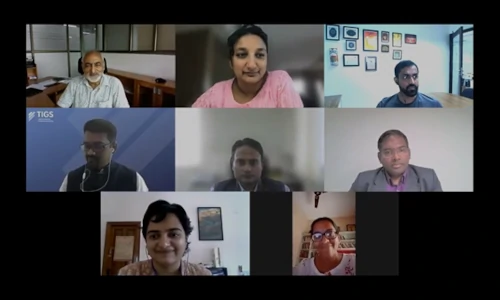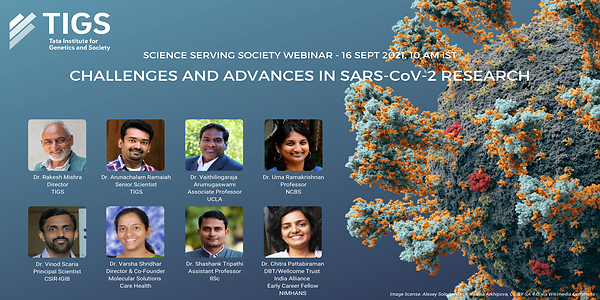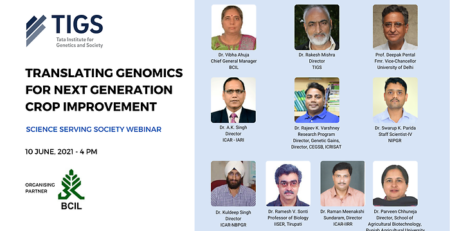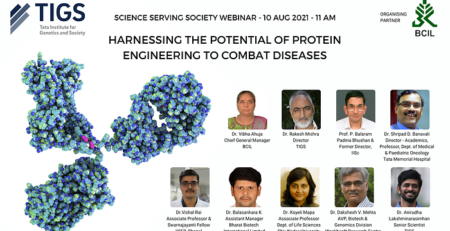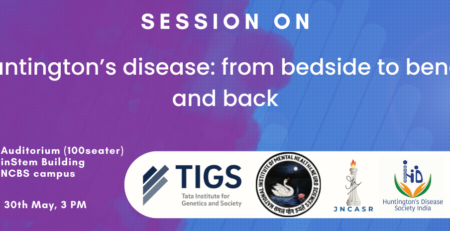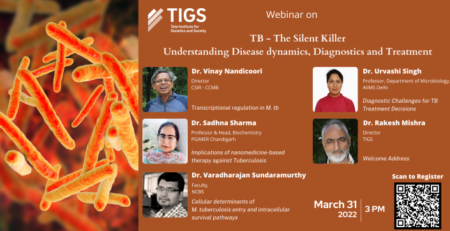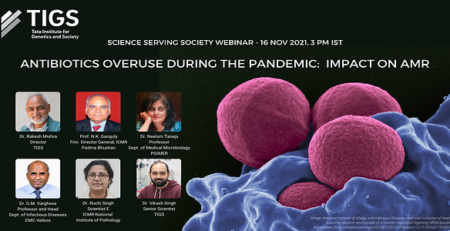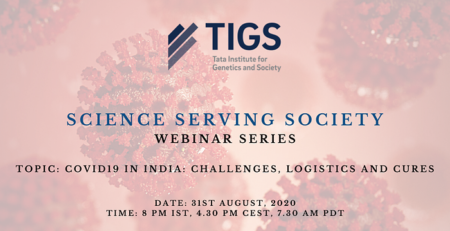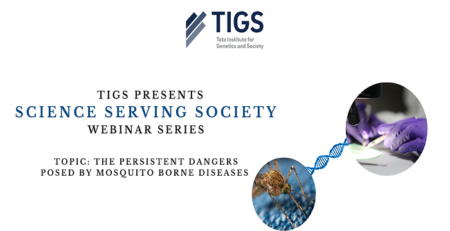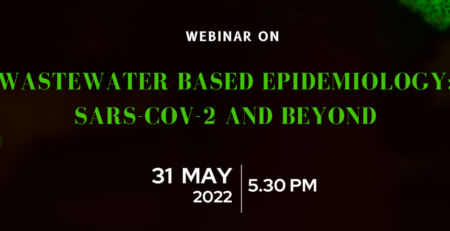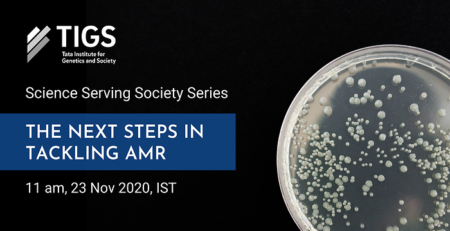Webinar recording
16 September 2021, 10 am IST
Zoom webinar
Moderator:
Dr. Arunachalam Ramaiah, Senior Scientist, TIGS
Chair:
Dr. Rakesh Mishra, Director, TIGS
Presentations:
- ‘COVID-19 and Future Pandemics: Research Approaches and Challenges’ by Dr. Vaithilingaraja Arumugaswami, Associate Professor, Department of Molecular and Medical Pharmacology, University of California, Los Angeles
- ‘What Did We Learn from the SARS-CoV-2 Genomes from India’ by Dr. Vinod Scaria, Principal Scientist, CSIR-Institute of Genomics and Integrative Biology, New Delhi
- ‘Translating COVID-19 Big Data into Clinical Interventions’ by Dr. Shashank Tripathi, Assistant Professor, Department of Microbiology and Cell Biology, Indian Institute of Science, Bangalore
Panel discussion
- Dr. Uma Ramakrishnan, Professor, National Centre for Biological Sciences, Bangalore
- Dr. Varsha Shridhar, Director and Co-Founder, Molecular Solutions Care Health, Bangalore
- Dr. Chitra Pattabiraman, DBT/Wellcome Trust India Alliance Early Career Fellow, National Institute of Mental Health and Neurosciences, Bangalore
Highlights
Dr. Rakesh Mishra highlighted the several advances we’ve made in the last one and a half years in tackling the pandemic, in diagnostics, vaccines, treatment, and surveillance. He mentioned the importance of communicating the right message to the public and enlisting their participation in protecting themselves and their communities from the virus, through vaccines, social distancing, and wearing masks. Dr. Mishra also emphasized the need to respect wildlife and nature and the importance of co-existing with other animals.
Dr. Vaithilingaraja Arumugaswami talked about his work with Dr. Arunachalam Ramaiah in studying the i) origin of the SARS-CoV-2 virus when the pandemic first started and ii) host-SARS-CoV-2 interactions. His lab cultured the virus and its variants and performed drug screening to identify compounds that could inhibit the virus. The team used different models for this: lung air-liquid interface model, distal airway 3D organoid system, microfluidic system (lung-on-chip), and human induced pluripotent stem cell-derived cardiomyocytes. They found that Berzosertib, an ATR-kinase inhibitor, could inhibit the virus’ replication with minimal cell toxicity. The team is now studying other viruses that could potentially create pandemics. He also emphasized the need for India to strengthen its research infrastructure facilities, especially containment facilities (BSL3 and BSL4 facilities) that facilitate research on such viruses.
Dr. Vinod Scaria talked about early efforts in developing scalable solutions for sequencing the SARS-CoV-2 virus, particularly the COVIDSeq protocol, which could sequence 750-3000 samples in 24 hours. He talked about his involvement in the INDICOVGEN Consortium, which was established with seven states in the country to study SARS-CoV-2 genetic epidemiology. Their analysis found that all major states had large outbreaks that could be traced back to superspreader events. Their research also found that the largest spread of the virus in the state of Kerala was from interstate travellers rather than international travellers. The team is also involved in compiling data as part of the Indian SARS-CoV-2 Genomics Consortium (INSACOG) and other independent programs run by states and researchers across the country. The team maintains a dashboard that helps convey how the virus is spreading across the country and also maintains a number of key resources helpful for SARS-CoV-2 genome analysis. Dr. Scaria emphasised that when genome sequencing is done in a systematic manner it could help identify emerging variants well ahead of time.
Dr. Shashank Tripathi presented his labs efforts in analysing large COVID-19 omics data sets to identify prognostic markers and effective antiviral compounds. They analysed transcriptomics and proteomics data sets from RT-PCR COVID-19 positive and negative samples and shortlisted 46 genes, which were selected once more for high cumulative upregulation. They then validated the expression of these shortlisted genes in COVID-19 diagnostic samples and profiled infection markers, COVID-19 markers, and severity markers. They found that the S100 family of genes, which are Ca-binding proteins that regulate cascading inflammatory signals, are prognostic markers for COVID-19. The team also found that disrupting the Thioredoxin (TRX) system, a gene found upregulated in all data sets analysed, using Auranofin, an FDA approved drug, could reduce viral RNA copy numbers in cells.
Dr. Uma Ramakrishnan talked about the initial challenges faced by the Bangalore Life Science Cluster (BLiSc) (a recognized centre in validating diagnostic kits, viral genome sequencing and other COIVD-19 research) and how it overcame them. She also spoke about a group testing and compressed sensing methodology that she and other colleagues had developed for COVID-19 testing and the importance of studying human-wildlife interfaces, how changes in land use affect reservoirs and vectors and how the dynamics of ecological change and people’s interactions with ecology affect spill over.
Dr. Varsha Shridhar spoke about her experience with the COVID Action Collab, a city-wide platform that does sewage surveillance of SARS-CoV-2. She also spoke about how sewage surveillance helps with monitoring of SARS-CoV-2 variants, antimicrobial resistance monitoring, and other infectious diseases. In research settings, sewage surveillance has also helped track non-infectious conditions, such as identifying obesity hotspots and drug abuse hotspots. Dr. Shridhar also spoke about how emerging variants affect the molecular diagnosis of COVID-19 and challenges in the pre- and post-analytical stages of RT-PCR testing.
Dr. Chitra Pattabiraman spoke about her study on the introduction, spread, and establishment of SARS-CoV-2 in Karnataka by combining epidemiological and genomic data. She also spoke about her experience with the INSACOG consortium and the challenges associated with tracking variants of concern.
